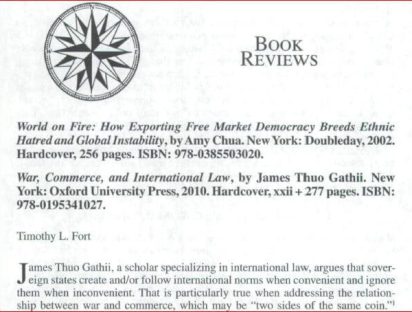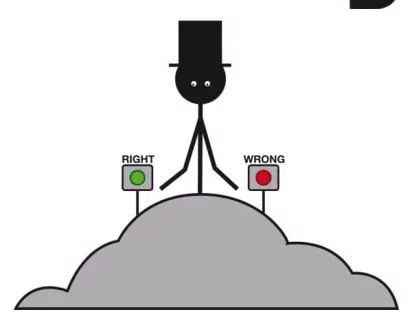 Can we say something about the world after the Covid-19 outbreak, based solely on the place of the epithet nouveau (new) next to the noun world, that is, by considering only the syntax of the adjective, the form of the nominal group to which it belongs? Situated in the field of the French language, this question specifically concerns the place of the adjective nouveau in the nominal groups nouveau monde and monde nouveau (the translation of both words being new world in English). In our previous article, we approached the relevance of this syntactic hypothesis in an oblique way, by putting forward reasons to consider that the expressions nouveau monde and monde nouveau have an equivalent meaning. But the syntactic hypothesis is legitimate. This is evidenced by the question asked in 1786 by the French Abbé Roubaud (1730-1792) about adjectives that can be placed before or after a noun:
Can we say something about the world after the Covid-19 outbreak, based solely on the place of the epithet nouveau (new) next to the noun world, that is, by considering only the syntax of the adjective, the form of the nominal group to which it belongs? Situated in the field of the French language, this question specifically concerns the place of the adjective nouveau in the nominal groups nouveau monde and monde nouveau (the translation of both words being new world in English). In our previous article, we approached the relevance of this syntactic hypothesis in an oblique way, by putting forward reasons to consider that the expressions nouveau monde and monde nouveau have an equivalent meaning. But the syntactic hypothesis is legitimate. This is evidenced by the question asked in 1786 by the French Abbé Roubaud (1730-1792) about adjectives that can be placed before or after a noun:
“Does the manner of placing these adjectives produce any difference in the meaning of the thing or in the value of the locution?” (1)
The observation of Dumarsais (1676-1756), cited by Roubaud, also bears witness to this:
“This position of the adjective before or after the noun is so indifferent that it sometimes changes the value of the noun entirely, or rather that of the adjective […]. But it is enough for us that it brings about a change of idea and meaning.” (2)
In this paper, we examine the syntactic hypothesis in more detail (sections 1 and 2), including the case of the adjective nouveau (section 3), before proposing three explanations for the use of nouveau monde and monde nouveau for the Covid-19 outbreak (section 4).
1. General considerations
Two clues, which appeared in our first article, already played in favour of the syntactic hypothesis. First, the fact that, on the basis of a simple Google search, occurrences of nouveau monde were four times more frequent than those of monde nouveau – a fact which, in itself, does not lend credence to our hypothesis, but which leaves open the possibility that the speakers had particular, certainly unconscious, reasons for anteposing or postposing the epithet, even if these reasons are not easily discernible.
The second clue is the CNRTL’s grammatical remark that “Nouveau is often postposed to the noun [in the following sense: which has just appeared] and often anteposed [in the following sense: which is added to or replaces something of the same type (whether or not it is quite similar); which is reborn, reappears],” the CNRTL adding that “its meaning depends less on its place than on its content.” This last observation, which is empirical in nature, suggests that the place of the adjective could obey specific rules. Let us briefly examine this hypothesis.
After recalling that “the postposition of the adjective epithet is the rule in modern French” – it is “the common order,” according to Roubaud’s words – and that adjectives are systematically antedated (for example numeral adjectives – premières heures du jour / first hours of the day) or postposed (for example coloured adjectives – chemise blanche / white shirt – or those derived from a noun – monde capitaliste / capitalist world), Yves Saint-Gelais notes that some adjectives can be placed before or after the noun they accompany (3). In the latter case, their place can be appreciated in two ways.
According to the first, the anteposition of the adjective gives it a “subjective appreciation value.” For example, in Saint-Gelais’ transformation of égarement regrettable into regrettable égarement (regrettable straying), the anteposition of regrettable conveys the idea that the speaker condemns the straying in question.
The second interpretation is based on the idea that “the qualifying value of the adjective seems to change radically in either position.” This radical change can take two forms: either the anteposition leads to an opposition of meaning, as in union sacrée and sacrée union (sacred union); or the meaning of the adjective differs, which is illustrated by the semantic difference between élève bon and bon élève (good pupil) (4).
The idea that the anteposition of the epithet would have a subjective value, i.e. reflecting the speaker’s perspective, whereas its postposition would have an objective value, is mentioned by Maurice Grévisse and André Goosse (5). However, they add three other explanations for the anteposition of the epithet: greater unity of thought, banal and expected information, and a more general and imprecise character. Here is the passage in question:
“Linguists have tried to find the general principles which determine the place of epithets. The epithet is objective when it follows; subjective when it precedes. The combination adjective + noun is felt as a unit of thought, which is not the case when the adjective follows. The post-posited epithet brings new information; antecedent, it is only a banal, expected qualification. Ordinarily antecedent adjectives have a fairly broad meaning, therefore they provide little precise information and are applicable to many circumstances.”
More contemporary interpretations have been proposed on the function of the adjective in the nominal group, including cognitive perspectives (6), but we will focus on the second interpretation, that of the difference based on the unity or fractioning of thought that is communicated by a nominal group comprising a noun and an adjective.
2. Unity or fractioning of thought
In the 11th edition of Le Bon usage (7), Maurice Grévisse specified that, when the epithet is anteposed, the adjective and the noun cooperate semantically to form a common idea:
“The adjective epithet is placed before the noun when, without having entered into the fixed syntax, the combination adjective + noun is very strongly felt as a unity of thought: there is then a single accent of intensity. But when the combination of noun and adjective is not felt as a single unit of thought and each of these words is struck with an accent of intensity, the adjective epithet is placed after the noun; however, it can precede it if it has a lot of affective strength.”
This interpretation is mentioned by Marc Wilmet in one of his articles on the place of the epithet in the French language (8). Before proposing his own analysis, based on experimental data, he summarises four traditional explanations for the differences in the place of the epithet in the nominal group: semantic, stylistic, cultural and philosophical explanations. In the first category is the explanation based on the unity of thought that we have mentioned. According to this, the anteposition tends to unite the adjective and the noun, while the postposition tends to separate them:
“The Adjective – Substantive order amalgamates the epithet and the noun into a single concept, [while] the Substantive – Adjective order separates the epithet and the noun into two conceptual domains.”
Wilmet offers an example using the French adjective savant (learned) and the noun amoureux (loving) – no doubt inspired by the article “Savant homme, Homme savant” by Abbé Roubaud. When savant is anteposed, the nominal group savant amoureux refers to a lover with specific knowledge in the field of love – an “expert in love.” The meaning of the two concepts is unified. When savant is postposed, the nominal group amoureux savant communicates two distinct ideas: on the one hand, the noun in question is a lover; on the other hand, this individual who happens to be a lover has a great deal of knowledge, a sum of knowledge that cannot be reduced to the field of love. In the postposition, the meaning of the noun group is split. (9)
In the wake of this explanation, Joëlle Gardes Tamine stated in 2005 that, in the anteposition, the noun carries a “group accent,” while the adjective plays a subordinate role, “[losing] at the same time its semantic force in favour of an impressive value” (10) – a value that Françoise Vreck describes as intensive (11).
3. The adjective nouveau
Let us now turn to the case of the temporal adjective nouveau, which refers to “things that have just appeared, that have not been known for a long time” (12), and about which it is said that “sometimes [it] takes on very different meanings, depending on whether it is placed before or after the noun” (13). In Le Grand Larousse de la Langue Française, Henri Bonnard makes the following remark about his place in the nominal group:
“It should be noted that nouveau, depending on the place it occupies – before or after the noun – often has a different meaning: a robe nouvelle (new dress), a dress of recent fashion, and a nouvelle robe, another dress; a nouveau vin (new wine), a wine different from the one we have just drunk, and vin nouveau, wine from the last harvest. In principle, nouveau placed after the name is used literally and strongly.” (14)
“Literally and strongly” refers to the fractioning of the unity of thought that we mentioned above. In the postposition, the adjective nouveau retains its semantic value. This is what Wilmet observes when he asserts that nouveau is one of those adjectives which, by anteposing themselves, “sacrifice” their autonomy (15). Similarly, Bonnard notes that anteposition occurs when the epithet does not fulfill a qualifying function, but a determining function. This is the case with the statement un nouveau film de Bergman (a new film by Bergman), which situates or determines the film in question in the temporal sequence of the films made by this director (16).
But the anteposition and postposition are also associated with the context to which the nominal group refers. This context may be narrow or broad – a distinction that does not necessarily coincide with the distinction between the particular and the general. The following example by Wilmet illustrates this contextual difference:
“A nouvelle voiture (new car) substitutes a vehicle x for y; a voiture nouvelle does not leave x.” (17)
We find here the distinction of the CNRTL: nouveau is often anteposed in cases where something is added to or replaces something of the same type (car x replaces car y) and postposed in cases where something has just appeared (car x remains the unique car at issue). But this distinction is not enough. It is necessary to add to it the reference to the contexts that are activated by both expressions.
This is what Maria Howden proposed in a text published in 1979. She discusses the example of the car, but emphasises the importance of context. It is, according to her, assumed when the epithet nouveau is anteposed (nouvelle voiture) (18). Howden notes that the car is new to the person buying it. In contrast to voiture nouvelle, which has a general character, the context of nouvelle voiture is restricted by the fact that the car in question is a particular car owned by a particular person:
“In other words, there is still a presupposed context to which a particular car is compared. Pre-position of the adjective has narrowed this context, however, by including not all imaginable cars, but only those which are associated (presumably through ownership) with a particular individual or group.”
Of course, nouvelle voiture can refer to the model that a car manufacturer would just put on the market (even if it looks more like: voiture nouvelle). But Howden points out that this broader context is not necessarily a component of the meaning of nouvelle voiture, whereas it is necessary to understand the meaning of voiture nouvelle.
Eventually, the idea that the anteposition implies a restriction of the context was already found in Abbé Roubaud’s following formula, where the particular item of clothing worn by a particular person (un nouvel habit / a new item of clothing) does not have the same extension as the item of clothing that is intended to launch a new fashion (un habit nouveau):
“A nouvel habit, says the Academy, is an item of clothing different from another that has just been left; a habit nouveau, an item of clothing of a new fashion. (19)
4. An interpretation
At the end of this short exploration, we can clarify our syntactic hypothesis. Here are three explanations of the meaning of nouveau monde and monde nouveau, which were used in the context of the covid-19 epidemic. These explanations are, of course, independent of any content, i.e. they do not take into account the social, political or economic characteristics of the next world.
a) Narrow context (anteposition) or broad context (postposition)
According to the first explanation, nouveau monde has a smaller extension and scope than monde nouveau, because it presupposes a specific context, known to the speaker or specific to the speaker. This context may be restricted by the speaker’s own desires or worldview, so that the difference between the two expressions could be likened to the opposition between subjective value (which would be evoked by nouveau monde) and objective value (which would be evoked by monde nouveau).
b) Unified concept (anteposition) or fractional concept (postposition)
Nouveau monde refers to a unified concept, not in the sense of the fixed locution Nouveau Monde / New World, but in the sense that the adjective nouveau reinforces the noun monde. In monde nouveau, on the other hand, the adjective retains conceptual independence.
This independence of the epithet nouveau in the postposition can mean two things: either novelty is desired as such; or it is carried by forces beyond us, which happen in spite of us, so that, from the point of view of those who are part of it, the monde nouveau has arrived as if unexpectedly, provoking general astonishment. This second possibility is exemplified by the following formula, quoted by Howden:
“C’est un monde nouveau qui s’ouvre à ses yeux.” (It’s a new world which is opening up before him.) (20)
c) Continuity (anteposition) or discontinuity (postposition)
Nouveau monde implies continuity with the previous state (the world before), while monde nouveau denotes a discontinuity, a break in the course of the world, in the sense that the world after is not governed by the principles of the world before and cannot be understood with the help of those principles.
In nouveau monde, the epithet nouveau evokes the idea of replacement, like the meaning it takes on in nouvelle voiture. This meaning includes the idea of continuity between the old world and the world after. It also implies that the new world is already known, or more precisely, “supposedly known.” Now, as Bernard Colombat notes: “It is easier to antepose what is supposedly known” (21).
Still in the anteposed version, and more fundamentally, the epithet nouveau also evokes the idea that the world is, by definition, always changing, always subject to movement, therefore always new. In this case, nouveau monde would be a pleonasm or would express an inclusive relationship of the same type as that conveyed by the expression blanche neige (white snow). Bonnard noted that “the epithet expresses a quality implied by the very definition of the noun, [for] all ‘snow’ is ‘white’,” before adding that “there is a fusion of semantism in a unity that confuses the adjective and the noun, a condition very favourable to anteposition” (22).
Conclusion
These three interpretations, especially the second and third, seem to us to give credit to the syntactic hypothesis. The syntactic hypothesis asserts, on the one hand, that the people who spoke of the nouveau monde or the monde nouveau that would come as a result of the coronavirus crisis did not say the same thing, and, on the other hand, that the difference in meaning resulting from the place of the epithet is independent of the content that these people gave to the next world.
It can of course be argued that their own ideal worldview influenced whether they anteposed or postposed the epithet nouveau. One can also consider that the two forms were semantically equivalent – which is a legitimate assumption, unless it serves to dismiss the problem. But our brief analysis suggested that one does not surreptitiously and innocently slip from nouveau monde to monde nouveau, or from monde nouveau to nouveau monde. That is, the meaning produced by the place of the epithet nouveau may nuance, even contradict, the contents of the world to come. This is a somewhat disturbing hypothesis, but a very plausible one.
Alain Anquetil
(1) Quoted from the Dictionnaire universel des synonymes de la langue française, contenant les synonymes de Girard, de Beauzée, de Roubaud, de d’Alembert, de Diderot, et d’autres écrivains célèbres, by J. E. J. F. Boinvilliers, Delalain, 1836.
(2) Op. cit.
(3) Y. Saint-Gelais, “La place de l’adjectif en français,” Dialangue, 2, 1991, pp. 17-21.
(4) These examples were also proposed by Saint-Gelais.
(5) M. Grévisse & A. Goosse, Le bon usage, 14th edition, De Boeck Supérieur, 2007. According to Marc Wilmet, the interpretation in terms of subjectivity-anteposition and objectivity-postposition is due to Erwin Reiner, La place de l’adjectif épithète en français. Théories traditionnelles et essai de solution, Wien-Stuttgart, Braumüller, 1968 (M. Wilmet, “La place de l’épithète qualificative en français contemporain: étude grammaticale et stylistique,” Revue de linguistique romane, 45, 1981, pp. 17-73)
(6) See for example the work of Nicole Delbecque (e.g., “Word order as a reflection of alternate conceptual construals in French and Spanish. Similarities and divergences in adjective position,” Cognitive Linguistics, 1(4), 1990, pp. 349-416), the book by María Luisa Donaire (La place de l’adjectif dans les stratégies énonciatives, Lambert-Lucas, 2009), and Christelle Hopp’s doctoral thesis in Languages, Literatures and Civilisations (La place de l’adjectif épithète dans deux romans du XIXe siècle: El Señor de Bembibre d’Enrique Gil y Carrasco et Los Pazos de Ulloa d’Emilia Pardo Bazán, 2017).
(7) M. Grévisse, Le bon usage. Grammaire française avec des remarques sur la langue française d’aujourd’hui, 11th edition, Paris, Duculot, 1980.
(8) M. Wilmet, “La place de l’épithète qualificative en français contemporain: étude grammaticale et stylistique,” op. cit. See also M. Wilmet, “Antéposition et postposition de l’épithète qualificative en français contemporain,” Travaux de linguistique, 7, 1980, pp. 179-201.
(9) In the words of Françoise Berlan: “The adjective [is] in an ‘analytical’ and ‘essential’ relation to the noun, that is to say, making its content explicit and not ‘synthetic’ adding an external and accidental quality.” (F. Berlan, “L’épithète entre rhétorique, logique et grammaire aux XVIIe et XVIIIe siècles,” Histoire Épistémologie Langage, L’Adjectif: Perspectives historique et typologique, 14(1), 1992, pp. 181-198).
This interpretation also corresponds to one of Roubaud’s five explanations to account for the “different nuances,” in his words, that are induced by the two places occupied by the epithet:
“The anteposed adjective is to the noun what the pronoun is to the noun; its idea becomes the main, essential, characteristic idea, inseparable from that of the noun, so that, from the two ideas and the two words, there seems to result only one complete idea and one compound word. The adjective postposed, on the contrary, is never in the noun except as an accident with respect to the substance; its idea is only incidental, secondary, indicative, and susceptible of a series of different modifications which present different points of view of the object.” (Op. cit.)
(10) J. Gardes Tamine, “De la grammaire à la stylistique. À propos de l’ordre des mots,” in J.-M. Gouvard (ed.), De la langue au style, Presse universitaires de Lyon, 2005.
(11) “By placing before the noun an epithet which could very well have followed it, one does not simply play on the order of the words, one also significantly alters the functioning of the adjective by making it lose some of its force and by giving it a role of intensification of the noun whose meaning it enhances in a way.” (F. Vreck, “La place de l’adjectif épithète,” Palimpsestes, 14, 2001, pp. 153-161.)
(12) R. Bailly & M. de Toro (ed.), Dictionnaire des Synonymes de la Langue Française, Librairie Larousse, 1947.
(13) C. Augé, Nouveau Larousse illustré, Librairie Larousse, 1897.
(14) H. Bonnard, “Nouveau,” Grand Larousse de la langue française, Vol. 4, Librairie Larousse, 1989.
(15) Wilmet gives the example of an antonym again: the old adjective. It is applied to a farm (also qualified by the sign x, y designating another object, e.g. a restaurant):
“An ancienne ferme (old farmhouse) is now used as a restaurant, museum or second home (x became y); a ferme ancienne continues without disrupting its activity (x remained x).”
(16) H. Bonnard, “Epithète,” Grand Larousse de la langue française, Vol. 2, Librairie Larousse, 1989.
(17) M. Wilmet, La détermination nominale. Quantification et caractérisation, Paris, Presses universitaires de France, 1986.
(18) M. S. Howden, “Structure in the lexicon. The French adjectives Neuf and Nouveau,” in L. Waugh & F. van Coetsem (ed.), Contributions to Grammatical Studies Semantics and Syntax (pp. 132-150), Leiden, E. J. Brill, 1979.
(19) Op. cit.
(20) Op. cit.
(21) B. Colombat, “L’adjectif: perspectives historique et typologique. Présentation,” Histoire Épistémologie Langage,14(1), 1992, pp. 5-23. Colombat explicitly referred to the article by Françoise Berlan, published in the same volume, op. cit.
(22) H. Bonnard, “Epithète,” op. cit.




